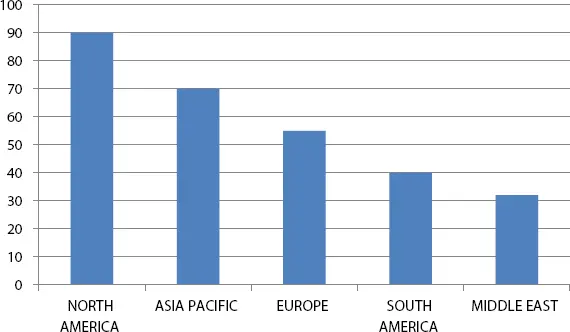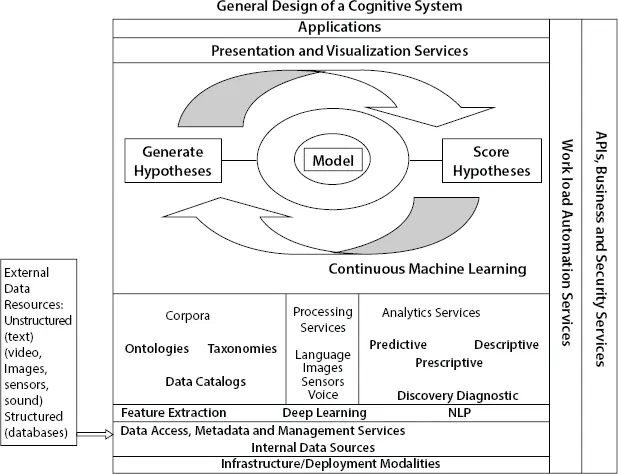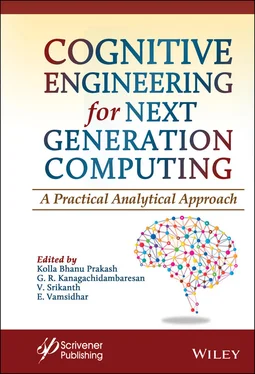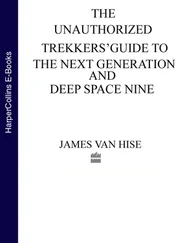1.4 Difference Between Cognitive Computing and Artificial Intelligence
Although it was stated that the foundation for cognitive computing is artificial intelligence there is a lot of difference between the two.
The basic use of artificial intelligence is to solve the problem by implementing the best algorithm, but cognitive computing is entirely different from artificial intelligence as cognitive computing adds the reasoning, intelligence to the machine and also analyzes different factors to solve the problem.
Artificial Intelligence mimics the human intelligence in machines. This process comprises making the machines learn constantly with the changing data, making sense of the information, and taking decisions including the self-corrections whenever needed.
Human beings use the senses to gather information about the surrounding environment and process that information using the brain to know about the environment. In this context, we can define that artificial intelligence can also include replicating the human senses such as hearing, smelling, touching, seeing, and tasting. It also includes simulating the learning process and this is made possible in the machines using machine learning and deep learning. Last but not least is human responses achieved through the robotics [18].
The cognitive computing is used to understand and simulate the reasoning and human behavior. Cognitive Computing assists humans to take better decisions in their respective fields. Their applications are fraud detection, face and emotion detection, sentiment analysis, risk analysis, and speech recognition [17].
The main focus of cognitive computing includes
1 To solve complex problems by mimicking human behavior and reasoning.
2 Trying to replicate the humans in solving the problems
3 Assists the human in taking decisions and do not replace humans at all.
Artificial Intelligence focus includes
1 To solve complex problems it augments human thinking, it tries to provide accurate results.
2 It tries to find new methods to solve problems which can potentially be superior to humans
3 The main intent of AI is to solve the problem utilizing the best algorithm and not simply mimicking the human brain.
4 The human role is minimized in taking the decisions and artificial intelligence takes over the responsibility.
The main advantage that needs to be highlighted is that Cognitive Computing does not pose any threat to humans. Cognitive computing helps in assisting human beings in taking better decisions in their tasks, endowing human beings with high precision in analyzing the things, same time having everything under their control. In the case of the health care system, cognitive computing assists the specialists in the diagnosis of the disease using the data and advanced analytics, by which it helps to take quality decisions by the doctors [10]. In Figure 1.4we can see the growth of Cognitive Computing in various continents. In Figure 1.5we can see the growth of revenue in the various locations of the world.

Figure 1.4 Global cognitive market [17].

Figure 1.5 Global cognitive market revenue, by geography [17].
1.5 The Elements of a Cognitive System
Several different elements constitute the cognitive system, starting from hardware and operational prototypes to modern machine learning algorithms and applications. Figure 1.6gives a general design for building a cognitive system.
1.5.1 Infrastructure and Deployment Modalities
The system needs to meet the demands of the industries as they continuously grow and the infrastructure should be flexible to carry on the applications required for the industry. A large amount of data is required to be processed and managed; this data consists of both public and private data. Cloud infrastructure services are required and constant support should be given, providing a highly parallel and distributed computing environment.

Figure 1.6 The general design of a cognitive system [11].
1.5.2 Data Access, Metadata, and Management Services
Data is the most important point where cognitive computing revolves around, so the data collection, accession, and maintaining it must have a very important role. A lot of essential services are required for adding the data and also using it. To ingest the data utmost care should be taken to check the source from which the data is originated. As a result, there is a requirement that data should be classified based on the origin of data, as it is required to check the data source was trusted or not. The most important thing to learn here is that the data is not static as it is required to update the data from the sources and upload it into the systems. The corpus is the one that holds the data and it relies on various internal and external sources. As a large data is available, a check should be done on data sources, data should be verified, cleaned, and check for accuracy so that it can be added into the corpus. This is a mammoth task as it requires a lot of management services to prepare the data.
1.5.3 The Corpus, Taxonomies, and Data Catalogs
Firmly connected with the information access and the other executive layer are the corpus and data analytics administrations. A corpus is the information base of ingested information and is utilized to oversee classified information. The information required to build up the area for the framework is incorporated in the corpus. Different types of information are ingested into the framework. In numerous cognitive frameworks, this information will principally be text-based (records, patient data, course books, client reports, and such). Other cognitive frameworks incorporate numerous types of unstructured and semi-structured information, (for example, recordings, pictures, sensors, and sounds). What’s more, the corpus may incorporate ontologies that characterize explicit elements and their connections. Ontologies are regularly evolved by industry gatherings to arrange industry-specific components, for example, standard synthetic mixes, machine parts, or clinical maladies and medicines. In a cognitive framework, it is frequently important to utilize a subset of an industry-based ontology to incorporate just the information that relates to the focal point of the cognitive framework. A taxonomy works inseparably with ontologies. It also provides a background contained by the ontology.
1.5.4 Data Analytics Services
These are the methods used to increase the comprehension of the information ingested and managed inside the corpus. Ordinarily, clients can take a bit of leeway of structured, unstructured, and semi-structured information that has been ingested and start to utilize modern calculations to anticipate results, find designs, or decide the next best activities. These administrations don’t live in separation. They constantly get to new information from the information get to layer and pull information from the corpus. Various propelled calculations are applied to build up the model for the cognitive framework.
1.5.5 Constant Machine Learning
Читать дальше















